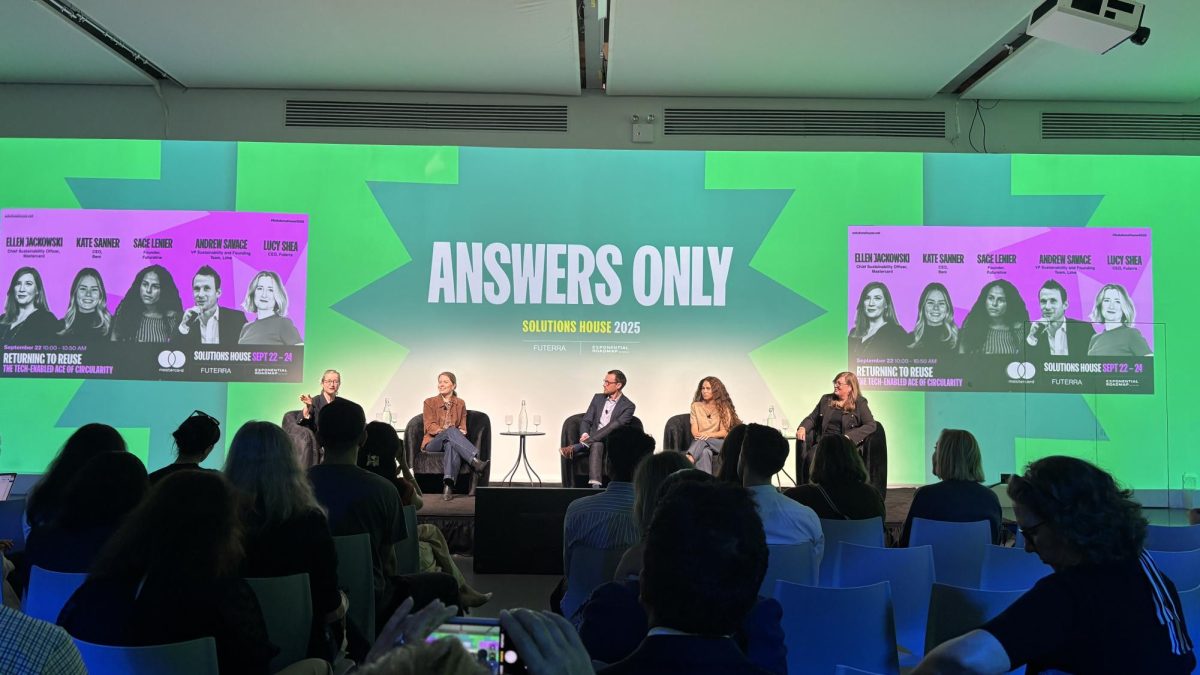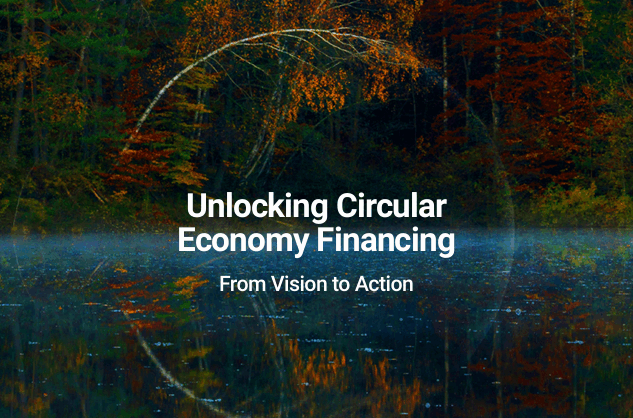Companies share vision of a circular economy in Climate Week panel – theticker.org

Corporate Initiatives Advancing Sustainable Development Goals Through Circular Economy Models
Introduction: Aligning Business with Global Sustainability Targets
A report from New York City Climate Week highlights a strategic shift among corporations towards circular economy principles, directly addressing key United Nations Sustainable Development Goals (SDGs). Executives from Beni, Lime, Futureline, and Mastercard detailed how their business models are being reshaped to promote sustainability, moving away from linear, single-use consumption patterns. This transition aligns with consumer demand and places responsibility on corporations to innovate for a sustainable future, with a primary focus on SDG 12: Responsible Consumption and Production.
Case Study: Beni and the Circular Fashion Economy
Beni, a search extension tool for secondhand clothing, exemplifies a business model built entirely on circular principles, contributing significantly to sustainability goals.
- Contribution to SDG 12: By facilitating the resale of luxury goods, Beni promotes reuse and extends the lifecycle of products, directly challenging the fast-fashion industry’s model of overproduction and waste.
- Economic Model: The platform creates a competitive marketplace for secondhand items, demonstrating a viable economic pathway that decouples revenue growth from the consumption of new resources, a core target of SDG 12.
Case Study: Mastercard’s Multi-Faceted Approach to Sustainability
Mastercard is leveraging its global reach to implement circular practices and reduce waste, targeting several SDGs through strategic partnerships and product innovation.
- Promoting Sustainable Cities (SDG 11) and Responsible Consumption (SDG 12):
- A pilot program in Aarhus, Denmark, introduced a deposit-refund system for reusable coffee cups.
- This initiative directly tackles urban waste management and reduces single-use plastic and paper consumption.
- The use of Mastercard’s payment network to refund the deposit simplifies consumer participation, removing friction from sustainable practices.
- Fostering Partnerships for the Goals (SDG 17): The program’s success relies on collaboration with 55 local merchants, demonstrating a scalable model for public-private partnerships to achieve sustainability targets.
- Innovation for Sustainable Production (SDG 12): Mastercard plans to transition to biodegradable plastic for its physical cards by 2028, addressing the end-of-life impact of its products.
Case Study: Lime and Sustainable Urban Mobility
Lime’s e-scooter rental service provides a practical solution for sustainable urban transportation, contributing to environmental and community-focused SDGs.
- Contribution to SDG 11 (Sustainable Cities and Communities) and SDG 13 (Climate Action): Lime’s shared mobility model offers an alternative to personal vehicle use, reducing traffic congestion and greenhouse gas emissions in urban centers.
- Technological Integration: The company utilizes artificial intelligence to manage scooter parking and optimize fleet availability, enhancing the efficiency and integration of sustainable transport options within cities.
Case Study: Futureline and Education for Sustainable Development
Futureline, an online education platform, focuses on empowering individuals and organizations with the knowledge to implement sustainable solutions, directly supporting SDG 4: Quality Education.
- Accessible Knowledge: Founded by Sage Lenier, the platform makes complex sustainability concepts accessible, focusing on practical solutions for building circular systems and addressing overconsumption.
- Fostering Innovation: By educating a broad audience on how sustainable economies function, Futureline aims to cultivate a generation of problem-solvers focused on actionable progress, which is fundamental to achieving the entire 2030 Agenda for Sustainable Development.
Analysis of Sustainable Development Goals in the Article
1. Which SDGs are addressed or connected to the issues highlighted in the article?
- SDG 12: Responsible Consumption and Production
- The article’s central theme is the circular economy, which directly aligns with SDG 12. It discusses reducing single-use items, promoting reuse, and shifting corporate and consumer behavior towards sustainability. Examples include Beni’s secondhand marketplace, Mastercard’s reusable cup program, and Lime’s scooter sharing model, all of which challenge traditional linear “take-make-dispose” consumption patterns.
- SDG 11: Sustainable Cities and Communities
- The article connects to this goal through initiatives aimed at improving urban environments. Lime’s e-scooter service offers a form of sustainable urban mobility. Mastercard’s pilot program in Aarhus directly addresses the problem of urban waste management by reducing disposable cups littered on city streets.
- SDG 13: Climate Action
- The article is framed within the context of New York City Climate Week, explicitly linking the discussed business models to climate solutions. The promotion of a circular economy, sustainable transport, and waste reduction are all strategies to mitigate climate change by reducing emissions and resource consumption. Futureline’s mission to create a space for discussing climate solutions also supports this goal.
- SDG 4: Quality Education
- This goal is addressed through the work of Futureline, an online education platform founded by Sage Lenier. The platform’s purpose is to make sustainability accessible and teach people “how it functions in economies, how it can succeed and how change can begin,” which is a direct form of education for sustainable development.
- SDG 17: Partnerships for the Goals
- The article highlights the importance of partnerships in achieving sustainability objectives. Mastercard’s pilot program is a clear example, involving a partnership between the company, its 150 million merchants (specifically 55 merchants in Aarhus), and consumers to create a functional system for reusing coffee cups.
2. What specific targets under those SDGs can be identified based on the article’s content?
- Under SDG 12 (Responsible Consumption and Production):
- Target 12.5: “By 2030, substantially reduce waste generation through prevention, reduction, recycling and reuse.” This is the most prominent target. Mastercard’s program directly tackles waste from single-use disposable cups through a reuse system. Beni’s platform promotes the reuse of clothing, reducing textile waste. Lime’s model is based on reusing (sharing) scooters instead of individual ownership.
- Target 12.6: “Encourage companies, especially large and transnational companies, to adopt sustainable practices…” The article profiles several companies (Beni, Lime, Futureline, Mastercard) that are actively adjusting their business models to incorporate circular and sustainable practices. Mastercard’s plan to transition to biodegradable plastic cards by 2028 is a specific example of a large company adopting such a practice.
- Target 12.8: “By 2030, ensure that people everywhere have the relevant information and awareness for sustainable development and lifestyles in harmony with nature.” Futureline’s educational platform directly works towards this target by making sustainability education accessible to a wide audience.
- Under SDG 11 (Sustainable Cities and Communities):
- Target 11.2: “By 2030, provide access to safe, affordable, accessible and sustainable transport systems for all…” Lime’s e-scooter service in 280 cities is presented as a way for riders to “utilize e-mobility more frequently,” contributing to sustainable urban transport systems.
- Target 11.6: “By 2030, reduce the adverse per capita environmental impact of cities, including by paying special attention to… municipal and other waste management.” The Mastercard program in Aarhus was initiated after “noticing disposable cups littered on the streets,” directly addressing municipal waste management to create a cleaner urban environment.
- Under SDG 4 (Quality Education):
- Target 4.7: “By 2030, ensure that all learners acquire the knowledge and skills needed to promote sustainable development…” Futureline’s mission to teach about sustainable economies, reuse, and solutions for a “Sustainable & Just Future” is a direct implementation of this target.
- Under SDG 17 (Partnerships for the Goals):
- Target 17.17: “Encourage and promote effective public, public-private and civil society partnerships…” Mastercard’s collaboration with “about 55 Mastercard merchants in the downtown area” of Aarhus to implement the cup return fee and refund system is a prime example of a public-private partnership aimed at a specific sustainability goal.
3. Are there any indicators mentioned or implied in the article that can be used to measure progress towards the identified targets?
- For Target 12.5 (Waste Reduction):
- Implied Indicator: Reduction in the volume of littered disposable cups on the streets of Aarhus. The article states the program was a response to this problem, so a decrease would measure success.
- Implied Indicator: The number of cups returned through the vending machines. This provides a direct metric for the engagement and effectiveness of Mastercard’s reuse system.
- Implied Indicator: Volume of secondhand goods sold. For Beni, an increase in the sale of used luxury goods would indicate a shift away from new production and a reduction in potential waste.
- For Target 11.2 (Sustainable Transport):
- Implied Indicator: Frequency of e-mobility use. The article mentions Lime’s goal is to let riders “utilize e-mobility more frequently,” suggesting that the number of trips per user or total trips within a city are key performance indicators.
- For Target 12.6 (Sustainable Corporate Practices):
- Mentioned Indicator: Percentage of payment cards made from sustainable materials. The article explicitly mentions Mastercard’s goal of a “transition to cards made of biodegradable plastic by 2028,” which is a measurable indicator of adopting sustainable practices.
- For Target 17.17 (Partnerships):
- Mentioned Indicator: Number of partners in a sustainability initiative. The article specifies “about 55 Mastercard merchants” participating in the pilot program, which serves as a direct indicator of the partnership’s scale.
- For Target 4.7 (Education for Sustainable Development):
- Implied Indicator: Number of learners engaged in sustainability education. The article notes that Sage Lenier’s course was the “most popular student-led course” at UC Berkeley, implying that enrollment and user numbers for the Futureline platform are key metrics for measuring its reach and impact.
4. Summary Table of SDGs, Targets, and Indicators
| SDGs | Targets | Indicators |
|---|---|---|
| SDG 12: Responsible Consumption and Production | 12.5: Substantially reduce waste generation through prevention, reduction, recycling and reuse.
12.6: Encourage companies to adopt sustainable practices. 12.8: Ensure people have relevant information and awareness for sustainable development. |
– Reduction in littered disposable cups in Aarhus. – Number of cups returned via vending machines. – Volume of secondhand clothing sold via platforms like Beni. – Percentage of Mastercard’s cards made from biodegradable plastic by 2028. – Number of users on Futureline’s educational platform. |
| SDG 11: Sustainable Cities and Communities | 11.2: Provide access to sustainable transport systems for all.
11.6: Reduce the adverse per capita environmental impact of cities, including waste management. |
– Frequency and number of riders using Lime’s e-scooter service.
– Reduction in street litter from single-use items in urban areas like Aarhus. |
| SDG 4: Quality Education | 4.7: Ensure all learners acquire knowledge and skills needed to promote sustainable development. | – Number of students/learners enrolled in Futureline’s sustainability courses. |
| SDG 17: Partnerships for the Goals | 17.17: Encourage and promote effective public-private and civil society partnerships. | – Number of merchants (55 mentioned) participating in the Mastercard pilot program. |
| SDG 13: Climate Action | 13.3: Improve education, awareness-raising and human and institutional capacity on climate change mitigation. | – Engagement with platforms like Futureline that are created to discuss climate solutions. |
Source: theticker.org
What is Your Reaction?
 Like
0
Like
0
 Dislike
0
Dislike
0
 Love
0
Love
0
 Funny
0
Funny
0
 Angry
0
Angry
0
 Sad
0
Sad
0
 Wow
0
Wow
0




















































.jpg.webp?itok=0ZsAnae9#)


























